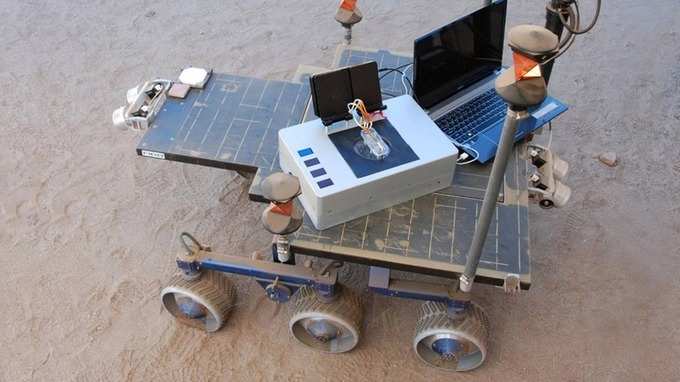 Whether it’s sending two humanoid robots to college or humans to Mars by 2030,
Whether it’s sending two humanoid robots to college or humans to Mars by 2030, Roughly the size of a regular computing laptop, but much thicker to make room for chemical analysis components inside, the chemical laptop is a miniaturized on-the-go laboratory which researchers hope to send one day to another planetary body such as
"Our device is a chemical analyzer that can be reprogrammed like a laptop to perform different functions," said Fernanda Mora, a JPL technologist who is developing the instrument with JPL's Peter Willis, the project's principal investigator. "As on a regular laptop, we have different apps for different analysis like amino acids and fatty acids."
Why amino and fatty acids? Because while the former are building blocks of proteins, the latter are key components of cell membranes. Both are essential to life, but can also be found in non-life sources. The Chemical Laptop, NASA says, may be able to tell the difference and help NASA identify the presence of life in other planets of our solar system.
How does the chemical laptop work? It is designed to take a liquid sample and mix it with a dye that will adhere itself to amino or fatty acids which can then be picked out through laser detection.
Notably, scientists have found out that Amino acids come in two types: Left-handed and right-handed. They hypothesize that life on Earth evolved to use just left-handed amino acids because that standard was adopted early in life's history. It's possible that life on other worlds might use the right-handed kind, feel researchers.
"If a test via the chemical laptop found a 50-50 mixture of left-handed and right-handed amino acids, we could conclude that the sample was probably not of biological origin," NASA researcher Jessica Creamer said. "But if we were to find an excess of either left or right, that would be the golden ticket. That would be the best evidence so far that life exists on other planets." Moreover, fatty acids will help in determining what organisms are or were present there.
(Image credit: NASA)
